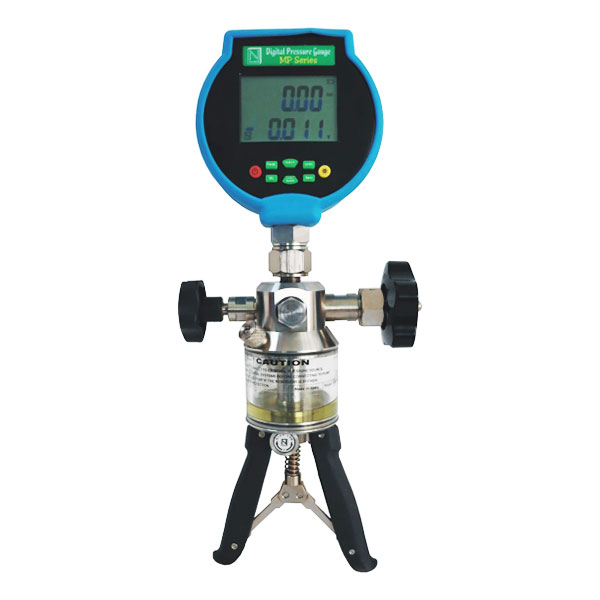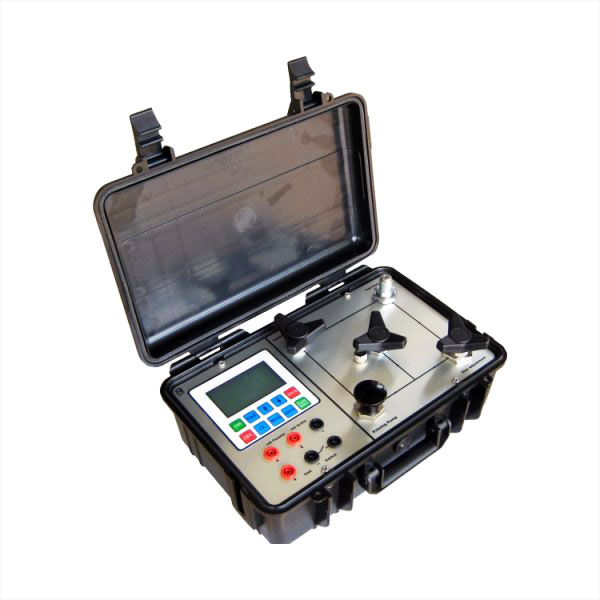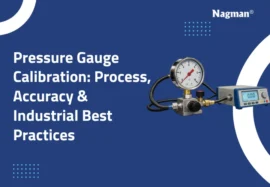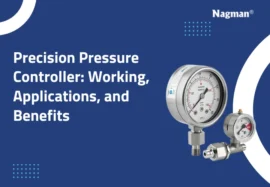Depending on specific industries, a business may rely on tight pressure settings, such as operations and safety systems. The comparison of measured data of a unit under test (your gauge) with those of a more precisely calibrated reference instrument is required to find the right pressure gauge calibration.
Pressure calibrators help in ensuring that the pressure devices are measuring and displaying accurate values. As a calibrated pressure gauge supplier, Nagman offers a range of well-built, rugged, reliable, easy to use, and friendly options of pressure calibrators that you can choose from based on your needs. It must be calibrated at regular intervals, just like any other process measurement instrument, to ensure that it is measuring appropriately.
Only by providing insight into the specifics of your workload can you fully modify and calibrate a pressure gauge. There are numerous factors that influence the pressure calibration standard you use. The accompanying are some critical questions to consider when selecting a pressure calibration standard for your application.
Do I need to use analogue pressure standards or digital pressure standards to calibrate my pressure gauge?
Most pressure calibration standards these days are digital, and the pressure gauges you’ll be calibrating are frequently a mix of analogue and digital. Digital pressure standards have generally superseded analogue pressure standards because they are more accurate, easier to maintain, and easier to read. As a result, using a digital standard for both analogue and digital pressure gauge calibration is extremely popular.
Which type of pressure media is used for calibrating the standard?
Liquids, gases, and compressed air are all used in various pressure calibration standards. Lower pressures are generally easier to attain using a gas, such as air or nitrogen, because it is compressible. Higher pressures are often easier to generate with the liquid medium because it is non-compressible (at minimum for practical purposes).
Are there any pressure ranges that need to be covered?
You could be allowed to get more out of less, relying on the standard your company chooses. On average, the more pressure band you will have to calibrate, the more expensive and complicated the standard you’ll need. A somewhat more precise calibration standard, on the other hand, may prove to be more effective and convenient in the long run than purchasing much lower-precision equipment.
A better accuracy instrument that substitutes three lesser accuracy instruments could charge less than the contract sum of the three standards, saving you money upfront. Furthermore, a more precise and sophisticated standard can help to simplify operations and eliminate errors. If your calibration workload can be handled by a single standard, it saves operators the time and effort of selecting the incorrect standard and potentially completing poor calibrations.
What is the best way to determine the accuracy I need?
It’s common for folks to mix up precision reading with resolution. The term “accuracy” in the realm of pressure calibration standards pertains to how much the standard differs significantly from the genuine value. The frequency of decimal points displayed by the calibration standard is referred to as resolution. Greater decimal places may not always imply greater precision. These are two distinct specifications.
Do those standards have a high cost of ownership?
Make sure to include in the cost of ongoing calibration standards maintenance when making your decision. Calibration standards must be calibrated as well. Calibration expenses for just a limited list of high standards will be less than those for a substantial number of lower-accuracy devices, allowing you to make up the shortfall in initial costs for several calibration cycles.
What is the recommended frequency of calibrating pressure gauges?
When it comes to calibrating pressure gauges, the fundamental guideline is to stick to the pressure gauge calibration equipment suppliers’ guidelines. Nevertheless, there may be a few exceptions where you would have to prolong the interval. If you have a demonstrated record of success in calibrating a particular device, this is an acceptable argument to do just that. To illustrate, you could perhaps record the deviation of a device over a term and conclude that, based on information, you no longer need to calibrate the device yearly and can safely stretch it to three to four years.
A whole other situation where you will be willing to stretch a pressure gauge calibration machine’s calibration cycle is if the gauge has a single application and is only used seldom. You may merely need to calibrate it before using it. You may save time and money by extending calibration intervals, but only if you are confident that you are not compromising the safety or accuracy of your equipment. Nagman offers customers a variety of differential pressure gauge calibration services and other pressure gauge calibration instruments based on their requirements.







